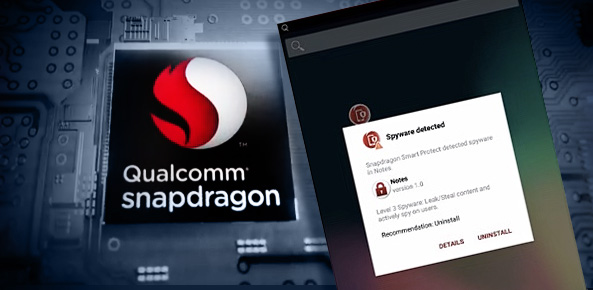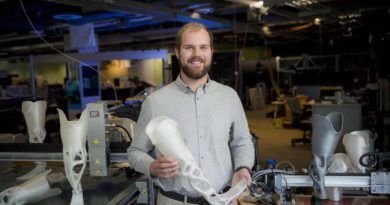Daily Business Report-Sept. 3, 2015
Qualcomm’s Snapdragon
Qualcomm Unveils
Anti-Malware Chip
Top Tech News
The new Snapdragon 820 chip by Qualcomm hopes to strike a blow against malware targeting smartphones by using machine learning to better identify malicious code, the company announced Monday. The new chips will be the first to sport the anti-malware technology developed as part of Qualcomm’s Snapdragon Smart Protect project.
The processor, which is expected to ship sometime in 2016, represents Qualcomm’s latest high-end mobile chip, succeeding the 808 and 810 families. The inclusion of such high-level anti-malware technology on the chip indicates that Qualcomm is hoping to appeal to enterprise clients by addressing one of the fastest growing concerns: zero-day exploits.
Traditional anti-virus software has a difficult time blocking these attacks, because they rely on comparing the signatures of malicious code against a database of known threats. The problem with zero-day exploits, of course, is that they’re implemented before software companies have a chance to identify them.
“This approach to detecting and stopping malware is limited, especially against the daily onslaught of new mobile malware,” Qualcomm wrote in a press release. “To make matters worse, even known malware apps can be ‘transformed’ simply by changing the binary code of the apps, rendering them essentially invisible to signature-based AV apps.”
Qualcomm’s Smart Protect initiative aims to overcome that problem by creating application programming interfaces (APIs) for use by phone manufacturers and antivirus app vendors to complement their security solutions with real-time Relevant Products/Services machine learning-based behavioral analysis. Smart Protect is designed to analyze and detect new malicious apps before their signature files have been incorporated into the signature databases of traditional AV apps.
Smart Protect technology achieves that by analyzing the behavior of device applications in real time to search for behavior that seems suspicious or anomalous. Suspicious applications are classified into severity levels of malware, ranging from more destructive malware applications, to spyware apps, to less threatening though annoying adware apps.
____________________________________________________

CONNECT Announces Semi-Finalists for the
2015 Most Innovative New Products Awards
CONNECT has announced the semi-finalists for the 2015 Most Innovative New Product Awards.
Forty-five San Diego companies were selected in eight categories fot the awards.
The signature event is held annually in December honoring San Diego’s “celebrities of innovation” along with the groundbreaking new products launched within the last year.
“The innovation economy in San Diego is driven by a wide variety of businesses and at CONNECT we take pride in highlighting these exceptional companies for the strides they make in their respective sectors, ” said Greg McKee, CEO of CONNECT. “The Most Innovative New Product Awards recognize the best of the best innovation originating in the San Diego area and painstaking process of creating a new product. For many, being recognized as an Most Innovative New Product Award winner can be a pivotal moment in their company’s success.”
Nearly 100 entries were received across eight categories: Aerospace & Security Technologies, Cleantech, Communications & IT, Diagnostics & Research Tools, Mobile Apps, Pharmaceutical Drugs & Medical Devices, Software and Sport & Active Lifestyle Technologies.
For the list of semi-finalists, click here.
Salk Scientist Appointed to National
Commission on Forensic Science
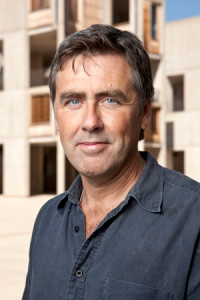
Salk neuroscientist Thomas Albright has been appointed to the National Commission on Forensic Science by the Department of Justice and the Department of Commerce’s National Institute of Standards and Technology.
Albright is among six appointees tasked with developing policy recommendations for the Attorney General to enhance the practice and improve the reliability of forensic science.
“For nearly two years, the commission has been hard at work developing recommendations to strengthen the field of forensic science and the six new commissioners will bring valuable new insights to this process,” said Deputy Attorney General Sally Quillian Yates, co-chair of the commission, in a statement on the U.S. Department of Justice website. “Their work is vital to ensuring the fairness of our criminal justice system.”
The National Commission on Forensic Science was established in 2013 and meets four times a year in Washington, D.C. It includes federal, state and local forensic science providers, research scientists and academics, law enforcement officials, prosecutors, defense attorneys and judges.
Albright was selected for the commission for his expertise on how the brain processes vision and stores memories. Last year, he co-chaired a National Academy of Science committee that released a milestone report outlining the unreliability of eyewitness testimony in criminal investigations and trials.
Albright directs the Vision Center Laboratory at the Salk Institute and focuses on exploring mechanics of visual information processing in the brain. He has received numerous honors for his work, including membership in the National Academy of Sciences.
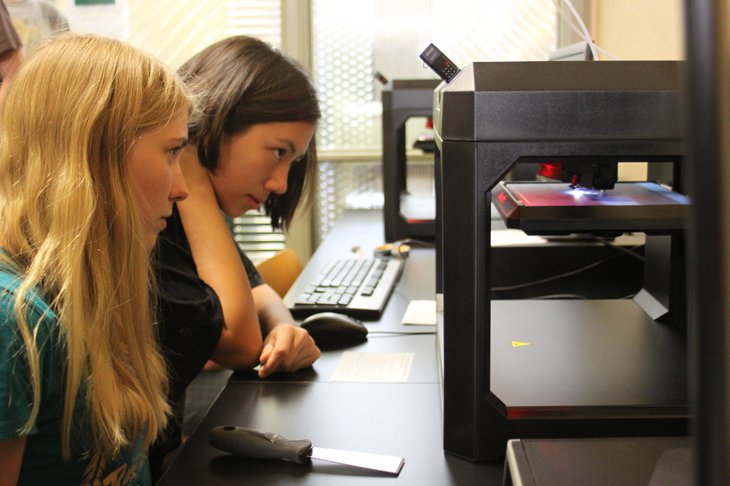
World’s First Public
Biotech Lab Opens in La Jolla
A grand opening celebration was held Tuesday for what San Diego officials believe to be the first public biotech laboratory in the world, located in a city library branch in La Jolla.
The lab, the result of a partnership between the city library system and San Diego Wet Lab, offers classes and workshops to educate students and other residents on biology.
The facility, located at the La Jolla-Riford Library at 7555 Draper Ave., also gives the public the opportunity to use equipment like DNA amplifiers that are typically only available to universities and private researchers.
The Wet Lab holds free lectures on a variety of topics related to science, workshops and projects in La Jolla and downtown San Diego.
“The library’s mission is to inspire lifelong learning through connections to knowledge and each other,” said Misty Jones, the city library director. “We are naturally technology facilitators and guides to the future. We know that fun and educational workshops pique the interest in the sciences among young people.”
Rep. Scott Peters, D-San Diego, said the area’s “thriving” science and research communities make it the perfect place for such a “bold and unprecedented venture” to succeed.
“The realization of this public-private partnership will expose students to careers in STEM fields and prepare them to be a part of our future workforce,” Peters said. “I hope that this laboratory provides a model for others to follow in our region and around the country.”

General Motors Donates Corvette, Silverado
and Impala Models to Cuyamaca College
Automaker General Motors has donated three vehicles to Cuyamaca College for its automotive technology program. The 2013 Corvette, 2014 Silverado and 2014 Impala will be used to train aspiring technicians enrolled in GM’s Automotive Service Educational Program (ASEP).
Cuyamaca College is one of three in California to provide the two-year program, which combines advanced automotive technical training with a strong academic foundation in math, English, electronics, analytical and technical skills culminating in an associate of science degree. GM auto dealerships sponsor the trainees, who alternate between on-campus instruction and paid work experience at the dealerships.
Chris Branton, coordinator of the college’s auto tech program and the ASEP instructor, said Cuyamaca College plays an important role in helping the auto industry fill a critical need: developing and retaining skilled automotive technicians. “This generous donation from GM enables us to deliver the highest quality education to our students,” he said.
Foundation Receives $63,237 Grant
To Improve Access to Cancer Screening
The San Diego County Medical Society Foundation has received a $63,237 grant from the Tri-City Healthcare District to support the “North County CRC Collaborative Project” for improving access to colorectal cancer screening and diagnostics for low-income residents.
The program will assure that patients screened for colorectal cancer will receive diagnostic care when needed. Tri City Medical Center will provide surgeries to project participants whose diagnosed colorectal cancer requires further treatment. SDCMS Foundation is focusing the project on North County, and targeting low-income, uninsured residents because they have among the lowest screenings rates.
Additional collaborators include Vista Community Clinic, North County Health Services, the California Colorectal Cancer Coalition, and the American Cancer Society. Currently, colorectal cancer has the highest rate of all cancer deaths among non-smokers in San Diego County.
SDG&E Launches Energy-Saving Marketplace
San Diego Gas & Electrichas launched a new online store, SDG&E Marketplace, for customers to quickly and easily shop for energy saving products offered by third-party retailers.
“SDG&E is among the first utilities in the nation to launch this type of online tool,” said Caroline Winn, SDG&E’s chief energy delivery officer.
At the SDG&E Marketplace, customers will be able to shop for rebate-eligible products, such as high-efficiency appliances, smart thermostats, and water conservation products. The SDG&E Marketplace also offers an option for personalized energy-saving tips based on a customer’s home profile and smart meter data.
To explore the site, visit sdgemarketplace.com.
Model Airplane Enthusiasts
Urged to Fight Anti-Drone Bill
Times of San Diego
Enthusiasts who fly model airplanes and small drones are being asked to fight a state bill that could subject weekend hobbyists to lawsuits and civil actions.
The Academy of Model Aeronautics, a 79-year-old organization with 176,000 members nationwide, is urging its California members to ask Gov. Jerry Brown to veto Senate Bill 142.
“While originally intended to address privacy concerns, the bill was amended in late June and, as such, now potentially subjects model aviation enthusiasts to possible lawsuits and civil sanctions for even an inadvertent excursion over the property of a neighbor that borders their flying field, schoolyard, park, or even their backyard,” the organization said in an urgent email Wednesday to members.
The bill, which was sponsored by Sen. Hannah-Beth Jackson from Santa Barbara, was sent to the governor last week. Brown has until Sept. 12 to either sign or veto it.
Jackson says the intent of her bill is to “prohibit remotely operated aerial vehicles known as drones from trespassing on private property without permission.”
Governor Signs American-Made Labeling Law
Times of San Diego
Legislation to allow manufacturers to label their products “Made in America” if no more than 10 percent of the final product is made outside of the United States was signed into law Wednesday by Gov. Jerry Brown.
The bill, co-authored by Republican Assemblyman Brian Jones of Santee and Democratic Sen. Jerry Hill of San Mateo, changes California’s 100 percent “Made in America” labeling standard to keep up with the global economy and allow conformity to the federal standard used by the 49 other states.
“The legislature — after five years of working on this issue — has finally undone an overly burdensome regulation that has hurt California manufacturers since the 1960s,” said Jones. “This onerous regulation was brought to my attention in 2010 by Vinturi Inc. wine aerators made in Carlsbad. I’m pleased that Governor Brown signed this bill into law, allowing for manufacturers to market their products proudly displaying the ‘Made in America’ label.”
The law will allow a product to be labeled “Made in USA” if materials from outside the United States constitute not more than 5 percent of the final wholesale value of the product or if the manufacturer can show that articles, units, or parts from outside of the United States do not make up more than 10 percent of the final product.
The new legislation takes effect Jan. 1.
Jones represents the 71st Assembly District, which covers most of the communities of eastern San Diego County.
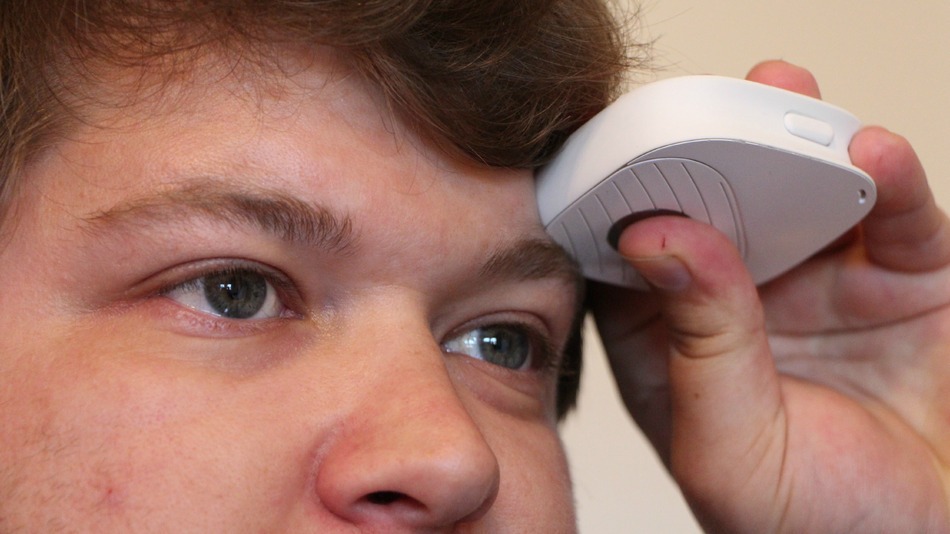
Wireless Health Sensor Undergoes Clinical
Trial at Scripps Translational Institute
City News Service
A wireless health sensor that measures four vital signs by touching the device to the temple is undergoing its first clinical trial, which is being directed by the Scripps Translational Institute, it was announced Wednesday.
The Scanadu Scout, which can relay results to both the user and researchers in a few seconds, is among the finalists for the $10 million Qualcomm Tricorder Xprize, a challenge to create a device based on the fictional hand-held wireless medical device depicted in the “Star Trek” television series.
“As more wireless health sensors become available to consumers, it is critical that these technologies undergo independent, scientific testing to validate their effectiveness and value,” said Dr. Eric Topol, who directs the Scripps Translational Science Institute and serves as chief academic officer of Scripps Health. “This study fully reflects the institute’s mission of clinical validation of promising digital technology before it goes into mainstream medicine,” he said.
The device developed by Silicon Valley-based Scanadu, measures heart rate, blood pressure, blood oxygen level and temperature through multiple electrodes and an infrared sensor.
It’s being tested for six months by more than 4,000 people, selected from among 5,000 or so who invested in a crowdfunding campaign.
Scripps Translational Science Institute researchers want to find out how easy it is to use the device, around the size of a makeup compact, and whether it changes health behaviors, such as patient communications with their physicians.
Users began the six-month testing period after they received the device. Their data is relayed to Scripps Translational Science Institute researchers via a smartphone app.
Final Xprize judging is scheduled for December and January, according to organizers of the competition.
Nearly 10 Percent of San Diego
Homes Still ‘Underwater’
Times of San Diego
A new report Thursday from online realtor Zillow finds that almost one home in 10 in San Diego is still “underwater” — valued at less than the outstanding mortgage — seven years after the Great Recession.
Zillow said 8.6 percent of San Diego-area homes overall and 12.7 percent of condominiums remained underwater in the second quarter of this year. Though high, this was less than the national average of 15 percent of all homes and 20 percent of condos.
The high rate of homeowners who owe more on their mortgages than their homes are worth is a lingering effect of the real estate crisis. At its worst, more than 15 million homeowners nationwide were upside down on their homes. Zillow noted that most of the homes still underwater are among the least expensive.
“The least valuable homes really bore the brunt of negative equity during the recession, and that’s where most negative equity remains concentrated today,” said Zillow Chief Economist Dr. Svenja Gudell. “As more first-time buyers enter the market seeking these less expensive homes, home value growth at the bottom end could continue to outpace growth overall, which will be good news for millions of underwater homeowners in these homes.”
Here’s how California’s metro areas ranked in the second quarter in terms of percentage of underwater homes:
Riverside — 15.8 percent
Sacramento — 13.0 percent
San Diego — 8.6 percent
Los Angeles — 7.8 percent
San Francisco — 5.4 percent
San Jose — 3.4 percent
Among the 35 largest housing markets, Las Vegas, Chicago and Atlanta continued to have the highest rates of homeowners in negative equity. Condo owners had the highest rates of negative equity in Las Vegas (36.7 percent), Chicago (32.6 percent) and Orlando (29.9 percent), while single-family homeowners had the highest rates in Las Vegas (23.8 percent), Atlanta (20.4 percent) and Chicago (19.2 percent
Salk Scientists Create Technology
For Treating Spinal Cord Injuries
When you’re taking a walk around the block, your body is mostly on autopilot — you don’t have to consciously think about alternating which leg you step with or which muscles it takes to lift a foot and put it back down. That’s thanks to a set of cells in your spinal cord that help translate messages between your brain and your motor neurons, which control muscles.
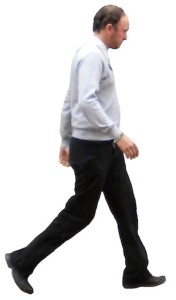
Now, for the first time, researchers have created a method to watch — in real time — the activity of those motor neurons. The new technology, developed by

Salk scientists and published in Neuron on Sept. 2, is helping researchers understand how spinal cord cells make connections with motor neurons, and how clinicians might be able to repair those connections in patients with spinal cord injuries or neurodegenerative diseases like amyotrophic lateral sclerosis (ALS).
“Using optical methods to be able to watch neuron activity has been a dream over the past decade,” says Samuel Pfaff, a professor in Salk’s Gene Expression Laboratory. “Now, it’s one of those rare times when the technology is actually coming together to show you things you hadn’t been able to see before.”
In the past, to measure the activity of neurons — whether in the brain or extending throughout the body — scientists relied on electrodes that could detect the change in electrical voltage inside a cell when it’s activated. But it is tricky to use electrodes to simultaneously record the activity of many different neuron types at once to study how their activity is synchronized.
To get around this shortcoming of electrode readings, Pfaff’s team used a fluorescent sensor protein called GCaMP6f that lights up whenever a neuron is activated. Unlike the electrodes, the protein could easily be added to many different cells at once. When Pfaff and his colleagues added GCaMP6f to motor neurons, they could watch with a microscope which cells were activated in a mouse spinal cord when chemicals that turn on walking circuits were added.
“You don’t need to do any kind of post-image processing to interpret this,” says Pfaff. “These are just raw signals you can see through the eyepiece of a microscope. It’s really a jaw-dropping kind of visualization for a neuroscientist.”
Pfaff’s group used the new method to answer a long-standing question about how a collection of cells in the spinal cord, called the locomotor central pattern generator (CPG), connects to the right motor neurons to allow movements like walking. The CPG, Pfaff says, is where relatively simple signals from the brain — to walk forward, or move your hand off a hot stove — are translated into more complex instructions for motor neurons to control muscles.
Personnel Announcements
Peter Schwartz Promoted at CBS Radio
Peter Schwartz has been named senior vice president, marketing manager and director of sales for CBS Radio San Diego, effective Sept. 14. Schwartz, who has spent more than 10 years at the station, will manage all operations and sales for KEGY-FM (Top 40) and KYXY-FM (Adult Contemporary).
Schwartz returns to CBS Radio from Pandora where he was regional sales manager and senior account executive for select automotive sales accounts.
Prior to Pandora, Schwartz was regional manager for MOGL, a start-up in the rewards loyalty space in San Francisco, building their operation in the Bay Area.

